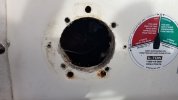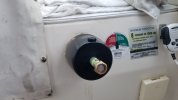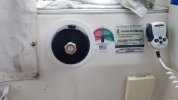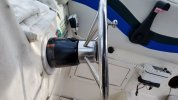I went through this years ago with my plastics rep. He told me that starboard was just a brand. And that they were used In marine mostly in the beginning because they had a nice texture on the sides. Then 2 other brands came out with the same texture. This is my plastics rep who deals directly to places like industrial plastic, and all the local suppliers.
From my understanding polyethelene by itself is not the same material and the high density polyethelene is the stuff that starboard puts their name one, seaboard, and a few others.
Not to disregard what your sales guys say, my gueses is he was just trying to keep things simple, but I’ve taken materials science and engineering, and at one point was thinking of forming a kayak manufacturing company, I’ve studied polyethylene and composites extensively. I don’t state my opinions on these maters, just the facts as they are. and just for more background, I build and prototype different products in my spare time for fun, and I copied parts of this from a report I did years ago .
polyethylene comes in various densities, lowest being whats used in plastic bags LDPE, its is all the same base material that can have additives or catalysts that change the strength or characteristics and create longer or shorter molecule chains with greater or fewer number of branches and change how they bond. For example you can add a catalyst during the forming process to create cross linked polyethylene, which gives it better resistance to permanent deformation, but retaining most of the same properties of a similar density PE, this is often referred to as PEX, however you can cross link several of the polyethylene formulations. Downside is you cannot then bond the plastic with welding techniques so whatever you form has to be done in one shot, and mechanical means beyond that.
In the Polyethylene family of plastic there are several base formulations of PE
Low density Polyethylene LDPE
Linear Low density Polyethylene LLDPE
Medium density Polyethylene MDPE
High Density Polyethylene HDPE
Ulta High Molecular Weight Polyethylene UHMWPE
In layman’s terms the density and resilience in deformation is determined by how many branches the molecule has. More branches = lower density, less branches = higher density, of course there is more to it than just that but it’s the base principle
An no its not all the same by any means, and PE can be blended with to obtain different harnesses, bending/re-forming ability, chemical resistance, UV resistance, friction coefficient, oxidization resistance, flammability, final density (by causing micro-bubbles to form), rigidity and the list goes on. Each manufacturer uses roughly the same base material and then uses additives and catalysts/reactants to change the characteristics of the end product, while the products look the same they will most often have different formulations.





